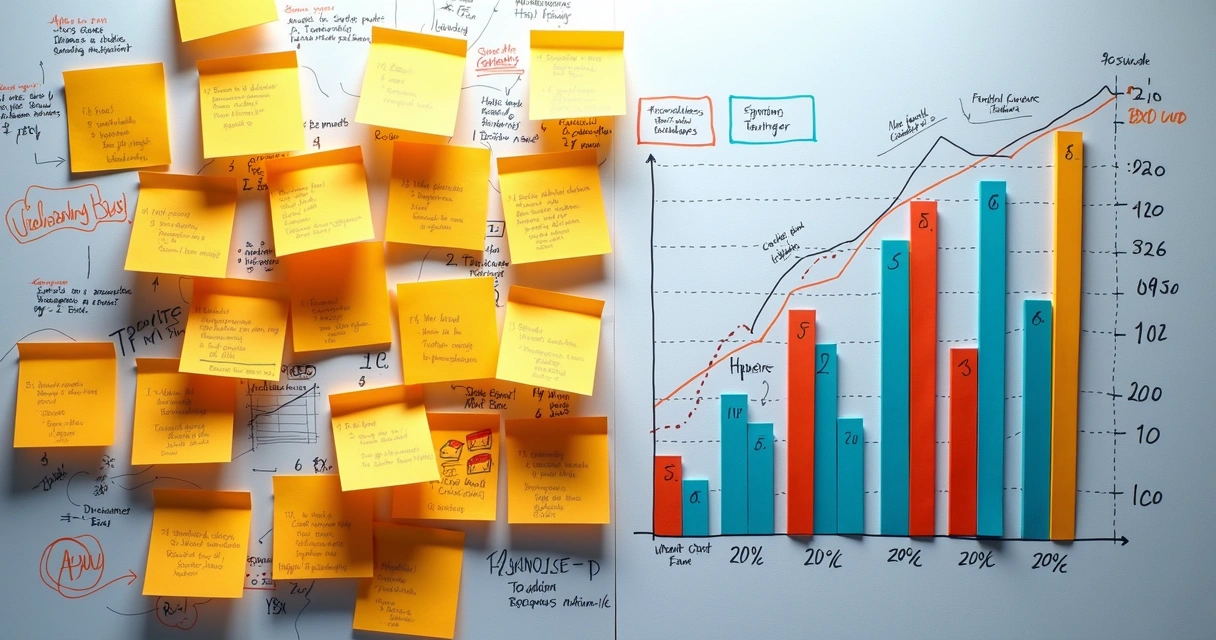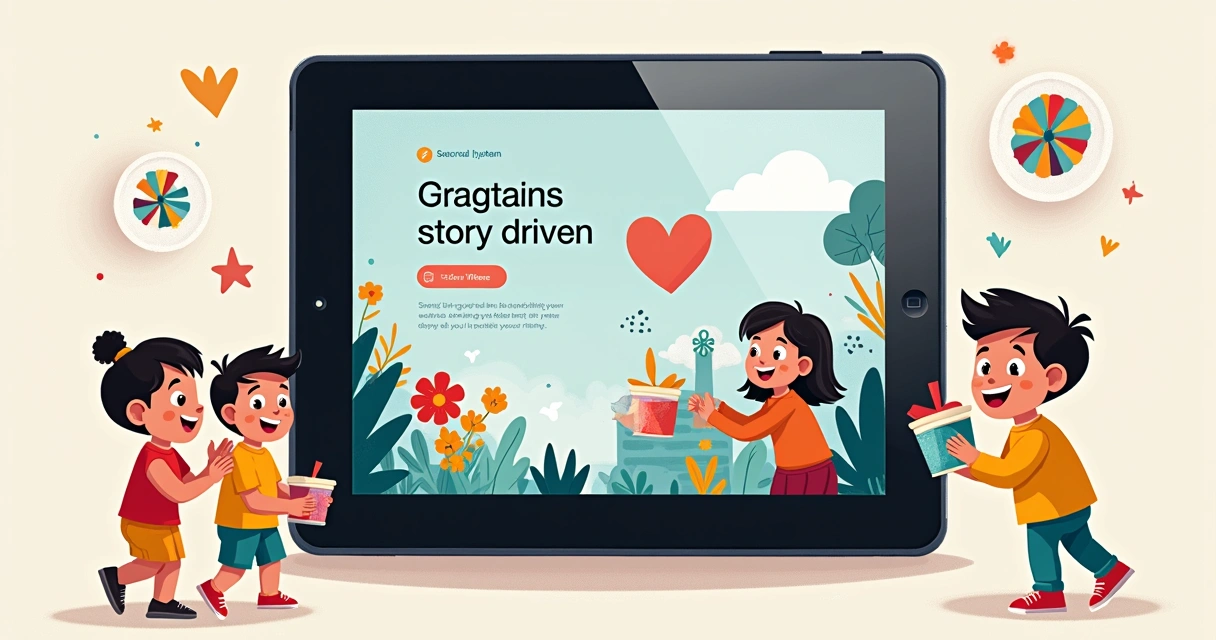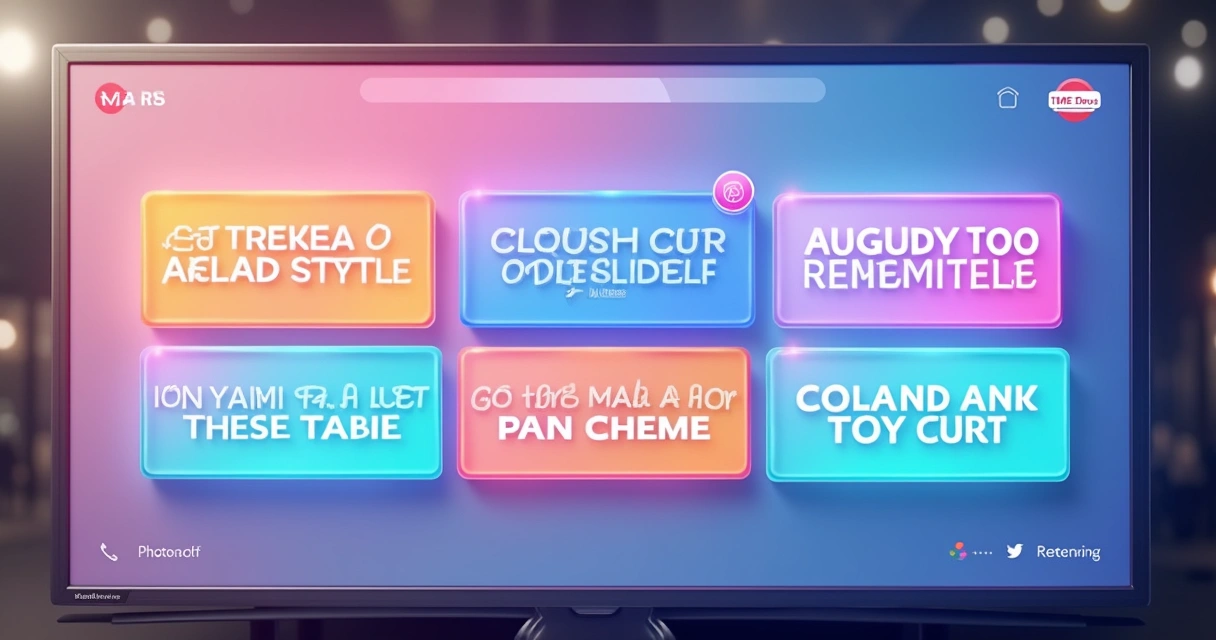You have probably seen countless ads on your Meta platforms. Some make you stop scrolling; others, you skip without a second glance. What separates the two? It almost always comes down to the words—what they spark in your mind and how quickly they get to the heart of your need. Crafting persuasive messaging for Meta Ads and other social platforms is both an art and a science. The recipe blends creativity, psychology, speed, and, increasingly, smart AI-powered tools. In this comprehensive guide, you’ll find proven strategies, subtle psychological tricks, and hands-on tactics to help you create messaging that gets real, trackable results.
Why copy matters in Meta Ads
Imagine you’re walking through a noisy marketplace. Everywhere you look, there are shouts and bright signs, all screaming for your attention. Social feeds feel much the same. Studies routinely show the average person’s attention span for an ad is less than two seconds—if that. So, your message has to cut through the noise immediately. It should grab, inform, invite, and reassure; all within a blink.
The market for AI-driven marketing is expanding fast. According to industry projections, AI in advertising and marketing could exceed $107 billion by 2028. This signals an environment where rapid, high-volume, and data-smart messaging becomes the baseline.
And there’s more. Messaging for platforms like Meta has to work differently than traditional formats. People aren’t searching; they’re scrolling. Your copy has to catch interest without being intrusive. It has to be familiar, yet surprising. And above all, it needs to drive clear action.

Getting started: knowing the platforms and their audiences
Meta covers Facebook, Instagram, Messenger, and more. Each platform has its own vibe and user base:
- Instagram: Visual, fast-paced, trend-driven. Short captions, bold hooks, and striking visuals matter most.
- Facebook: Community building, mixed demographics, longer attention spans (but not much longer). Conversational, story-driven approaches often do well.
- Messenger: Direct, personal. Feels like a private chat. Tone should be friendly and informal, yet respectful.
The best messages don’t just “fit”; they feel natural in these environments. So, before you even start, spend time inside these platforms. Notice what stands out. What feels honest? What feels not quite right?
The psychology behind persuasive messaging
If ads are interruptions, then your job as a copywriter is to justify the interruption. Here’s where psychology comes in. People rarely remember the features—they remember how you make them feel.
Think about these classic triggers:
- Curiosity: Pose an intriguing question or statement.
- Urgency: Offer limited-time deals or highlight time running out.
- Social proof: Reference happy customers, growing communities, or trending topics.
- FOMO (Fear of Missing Out): Suggest scarcity (“Only 3 left!”), exclusivity, or unique access.
Human behavior proves it, but AI can help you spot patterns and preferences faster than ever before, helping you hit the right emotional notes at scale.
Benefit-driven headlines and calls to action
If you could only write seven words, what would they be? That’s the challenge of headlines. They deliver the promise. They spark a reaction.
Some quick tips:
- Lead with the benefit: Instead of “New app available,” try “Save 2 hours a day with our app.”
- Be specific: Vague promises fade into the background. Instead of “Lose weight fast,” try “Lose 5 pounds in 2 weeks, naturally.”
- Use strong verbs: Action words inspire action. Try “Discover,” “Unlock,” “Transform,” “Boost.”
- Avoid hype: Readers are smart. Promise what you can actually deliver.
Calls to action (CTAs) are not just a button or a phrase—they’re a gentle nudge, saying: Now’s your moment. But not all CTAs are equal. “Learn More” sometimes works, but “See how it works” feels more personal. Or instead of “Sign up,” use “Join 1,000 happy customers.”
AI-powered tools like Automads can quickly generate dozens of headline and CTA options, helping teams test and refine what really resonates. More on that soon.

Testing fast: the power of rapid iteration
One myth is that superstar ads are born fully formed in the mind of a creative genius. Reality? The best ads are built through rapid experimentation.
AI-powered solutions speed up what used to be slow, manual work. Instead of brainstorming for days to test five angles, you can generate and launch dozens of versions in minutes. This is where Automads shines. It produces written content, static images, and even actor-driven videos in seconds—no credit card required, no commitment at first. For marketing teams who need to move fast, that changes everything.
This is, frankly, where AI-based tools have revolutionized ad production. A survey revealed that 98% of small businesses now use AI tools, and 40% deploy generative AI for tasks like copy and image creation.
How to structure an effective test
- Start with a single goal (clicks, sign-ups, video views, etc.).
- Draft several variations focused on just one change each—a different headline, angle, or CTA per test.
- Launch with a small budget to see early trends.
- Lean on platform metrics (like Facebook Ad Manager) and automations to quickly spot winners.
- Scale the best performers, but keep iterating. Even subtle tweaks can bump results another 10% or more.
AI-generated copy typically improves engagement by over 19% on average, according to recent research. But human-written messaging still wins for “brand feel” and resonance, as shown in a study where human-crafted ads had 60% more clicks compared to purely automated versions. That’s why hybrid strategies—where AI drafts and humans refine—are often best.
“Test fast. Fail fast. Learn faster.”
Balancing creativity and data
There’s a sweet spot. You need creative sparks to grab attention, but data keeps you on the right track. How do you know you’ve hit the mark? It’s not the prettiest copy or cleverest joke. It’s the numbers. They don’t lie—but they don’t tell the whole story, either.
It can feel awkward at first, trying something bold. “What if people hate it?” But discomfort is often where the magic begins. Let the audience decide with their clicks and comments.
Gathering data on your ad performance is simple but vital. Key metrics to watch on Meta platforms include:
- CTR (Click-through rate): Are people clicking your ad over others?
- Conversion rate: Are people taking action after clicking?
- Engagement: Are viewers liking, sharing, or commenting?
- Video views/drop-off: How far into your content do people go before bouncing?
Once you gather results, keep refining. Swap in new headlines. Test different images or AI-created video versions. Use the findings to drive your next iteration, rather than sticking to your first approach simply because it “sounds right.”

The secret to compelling descriptions
Headlines pull viewers in, but descriptions seal the deal. In Meta Ads, visual appeal pairs with a second line or two of copy to answer: “Why does this product fit my life right now?”
- Be concise: You rarely have room for more than two lines. Every word should help the reader imagine a better life with your product.
- Anticipate objections: If price is a common concern, mention a free trial. If complexity is an issue, stress ease of use.
- Speak to one person: “You” is powerful. The more your ad feels like a direct message rather than an announcement, the better.
- Leave a curiosity gap: Don’t reveal everything in the description. Tease just enough that the viewer wants to know more.
For instance, instead of: “Try the new Automads platform today.”
Try: “What if the next great ad took just seconds to create? Experience instant ad ideas—no credit card required.”
“Short, sharp, and clear beats long and clever every time.”
The role of visuals: images and videos
The visual side of your ad matters as much as—or more than—the words. Words without imagery rarely perform. Just as a well-crafted message invites, a strong image or video reinforces it at a glance.
Recent studies point out that Facebook video ads outperform static images, with a higher click-through rate and better overall engagement. People love stories in motion. But combining punchy copy with appealing visuals remains the foundation.
Tips for pairing images and words
- Make sure text and image support the same message. If your words say “fast and easy” but your visual looks complicated, you lose trust.
- Use real people, or realistic AI-generated actors, for relatability.
- Try playful images or short looping videos for Instagram, where the vibe is more relaxed.
- Ensure your logo and key phrases are visible, but not overwhelming.
- Test contrasting color schemes that highlight your main button or call to action.
Platforms like Automads allow you to generate both the copy and matching visuals—sometimes even actor-style videos—instantly, saving time and creating a unified brand experience.

Keeping your brand voice consistent—even at scale
Scaling up your ad production can threaten consistency. When you’re testing dozens or hundreds of variations, how do you make sure they all “sound” and “look” like you?
- Build a simple brand guideline: List approved words, tone notes, forbidden phrases, and core product promises.
- Feed your preferences into AI tools: Modern AI generators, like Automads, can be taught your unique “brand voice” by giving them samples of old ads, approved language, and desired tone. They’ll produce on-brand variations automatically.
- Assign a human reviewer: Have someone who understands your brand do a quick pass over any AI-generated copy before publishing. Look for tone, jargon, or off-message content.
“Consistency isn’t boring—it’s what builds trust.”
Your messaging should never feel like it’s coming from a robot. Add a dash of personality, repeat memorable phrases, and don’t be afraid to sound human, even when a machine wrote the first draft.
Benefit-first thinking: it’s not about you
This can be one of the hardest but most powerful shifts in approach: Stop talking about features. Start showing the reader what they gain. A chair is not about “ergonomic foam and adjustable levers”—it's about a back that never aches again. AI tools sometimes get stuck in feature lists, so your job (or your team’s) is to keep the focus on the end-user's life.
Let’s rework an example:
- Feature-driven: “Automads generates ad variations using AI for rapid testing.”
- Benefit-driven: “Get multiple high-converting ad ideas in seconds and spend more time on what matters.”
The distinction might feel slight on paper. In practice, it’s huge.
Storytelling in a sentence (or two)
You don’t get a whole novel, but you do get a few words to paint a picture. Storytelling doesn’t mean a beginning, middle, and end. It means letting the viewer see themselves in the ad—right here, right now. Mention a common pain point. Suggest a dream outcome. Or just hint at a journey (“Take your marketing from slow to supercharged—instantly”).

Copywriting frameworks to speed up your work
Great copy doesn’t always come from scratch. Borrow tested frameworks to kickstart your brainstorming. A few favorite models for Meta Ads:
- AIDA (Attention, Interest, Desire, Action): Open with a bold statement, share something intriguing, promise a benefit, close with a clear CTA.
- PAS (Problem, Agitate, Solution): Name a problem, stir the pain, offer your product as the answer.
- FAB (Feature, Advantage, Benefit): State a feature, explain why it’s good, show what the reader gets out of it.
Plug your message into one of these, tweak, and test. Sometimes the best lines come from just reordering your information.
Embracing automation—without losing the human touch
The big fear with AI is losing your “voice” in a wave of sameness. But when used carefully, automation simply handles the heavy lifting. You can spend more time refining, less time staring at a blank screen. Automads, for example, creates instant variations at the push of a button, but you or your team keeps the final say and fine-tunes the output for your audience.
Remember, automation isn’t about replacing people. It’s about letting creative minds focus on what matters most—solving real problems for customers.

How Automads helps you scale with confidence
If you’re part of a busy marketing team or agency, the job is relentless: new campaigns, changing trends, mounting pressure to deliver more, and do it faster. Automads was built with these challenges in mind. Want to test 50 different hooks or headlines? Get AI-driven visual ads with consistent messaging? Automads handles it all—no credit card required to get started, but with the quality and security that agencies need when rolling out hundreds of campaigns a week.
Its biggest advantage? A clear focus on keeping your brand voice clear and unified, no matter how many variants you produce. That means you can confidently hand over “bulk” work to machines and spend your time on strategy, creative direction, and high-value tweaks.
Real-world workflow: from idea to launch in minutes
Let’s sketch a simple workflow for a modern Meta Ads campaign, using AI-powered tools for maximum efficiency:
- You define the campaign’s core audience and goal.
- Feed initial brand guidelines and past winning messages into Automads.
- Generate multiple written versions and matching visuals (static or video).
- Have a human reviewer clean up messaging, tweak for tone, and adjust visuals as needed.
- Upload all variants for rapid A/B testing on Meta platforms, watching early metrics.
- Scale up the top performers; archive or revise underperformers.
- Gather learnings, refine, and repeat. Every new data round makes your next campaign sharper and more targeted.
This type of lightning-fast workflow would have been unthinkable just a few years ago, yet it’s now accessible to businesses of any size.
Caution: common copy mistakes (and how to avoid them)
Even with the best systems and tools, it’s easy to make blunders that can stall your campaign. Here’s a quick checklist to dodge the worst pitfalls:
- Being too clever: If people have to think about what your ad means, you’ve lost them. Plain beats witty, almost always.
- Over-promising: If your ad sounds unbelievable, trust drops instantly.
- Forgetfulness of CTA: Every ad needs a next step. If you skip it, even interested viewers won’t know what to do.
- Too much text: Meta often limits text in images, and your audiences have short attention spans. Be ruthless in editing.
- Weak imagery: Low-quality or mismatched visuals drive down results fast.
Quick formulas and examples for instant inspiration
- “What if” openers: “What if you never missed a sale again?”
- Bold claims: “Cut your grocery bill in half—starting now.”
- Personal challenges: “Ready to tackle your workload in half the time?”
- Before/After: “Before: Hours wasted writing ads. After: Launch-ready copy in minutes.”
Try mixing and matching formulas or blending two approaches. If you’re not sure where to start, let AI give you a head start, then shape the output to suit your style.

Iterating for growth: the loop that never ends
The best result today is tomorrow’s second-best. The market constantly moves—new competitors, shifting trends, and evolving audience expectations. Regularly check your metrics. Watch for fatigue; even the best copy loses steam over time.
- Schedule routine reviews of ongoing campaigns. Freshen headlines and visuals at least every couple of weeks.
- Dig into comments and feedback. Sometimes what users say tells you more than the metrics alone.
- Invite your team to contribute winning variations to a shared “idea bank.”
- Watch for saturation—if engagement dips, it’s a sign to rework your creative.
This cycle of rapid testing, measuring, and tweaking lies behind every high-performing Meta ad campaign you see today.
In conclusion: your words, your wins
You don’t have to be a lyrical genius or a data scientist to create scroll-stopping Meta Ads. Success belongs to those who combine audience knowledge, sharp copy, fast testing, and smart use of technology. AI-powered platforms like Automads are making things faster and more accessible, but the human touch—your insight, your voice, your sense of what “just feels right”—remains irreplaceable.
“Every ad is a chance to be remembered—so make each word count.”
If you’re looking for an easier, faster, more confident way to handle high-volume campaigns without losing your edge, give Automads a try. There’s nothing to lose—and there’s no credit card requirement to jump in and see what your team could create. Meet your next winning ad idea today.
Frequently asked questions
What is ad copy in Meta ads?
For Meta ads, ad copy refers to the written content you see in an ad—headlines, main text, descriptions, and any call to action. It’s the message crafted to grab attention and get people to click, watch, sign up, or make a purchase. Good copy is tailored specifically for how people interact with social feeds: short, clear, and benefit-focused.
How do I write effective ad copy?
Start by understanding your audience and the platform where the ad will appear. Lead with benefits, keep it brief, and use active, direct language. Test several variations and see which one works best. Make sure to include a strong call to action and pair your words with appealing visuals. Don’t forget to review your messaging for brand alignment and clarity—sometimes a second set of eyes helps.
What are common mistakes in ad copy?
Some frequent mistakes include using vague, generic language; failing to highlight real value or benefits; leaving out a clear call to action; using too much text; or leaning on clichéd phrases. Consistency issues—where your ads sound off-brand—can also be a problem, especially if you’re creating a lot of variations quickly. Finally, neglecting to test or relying on assumptions rather than data leads to flat results.
How can ad copy improve results?
Well-written copy increases your ad’s ability to stop scrolls, spark interest, and drive action. By speaking directly to your audience’s needs and using clear, action-driven language, good copy helps lift click-through rates, conversions, and brand recall. When tested and improved regularly, it becomes a key driver of ROI and overall ad success, as seen in research showing boosted performance from optimized messaging.
What words work best in Meta ads?
Words that emphasize benefits, urgency, or exclusivity often work best. Examples include: “free,” “now,” “instantly,” “discover,” “save,” “exclusive,” “join,” and “see how.” However, the “best” words can vary by brand or context, so it’s smart to test different phrases and see what works for your audience. Always write as if you’re inviting a friend, offering them something valuable and making it easy for them to say yes.





